Abigail’s Crayon Drawing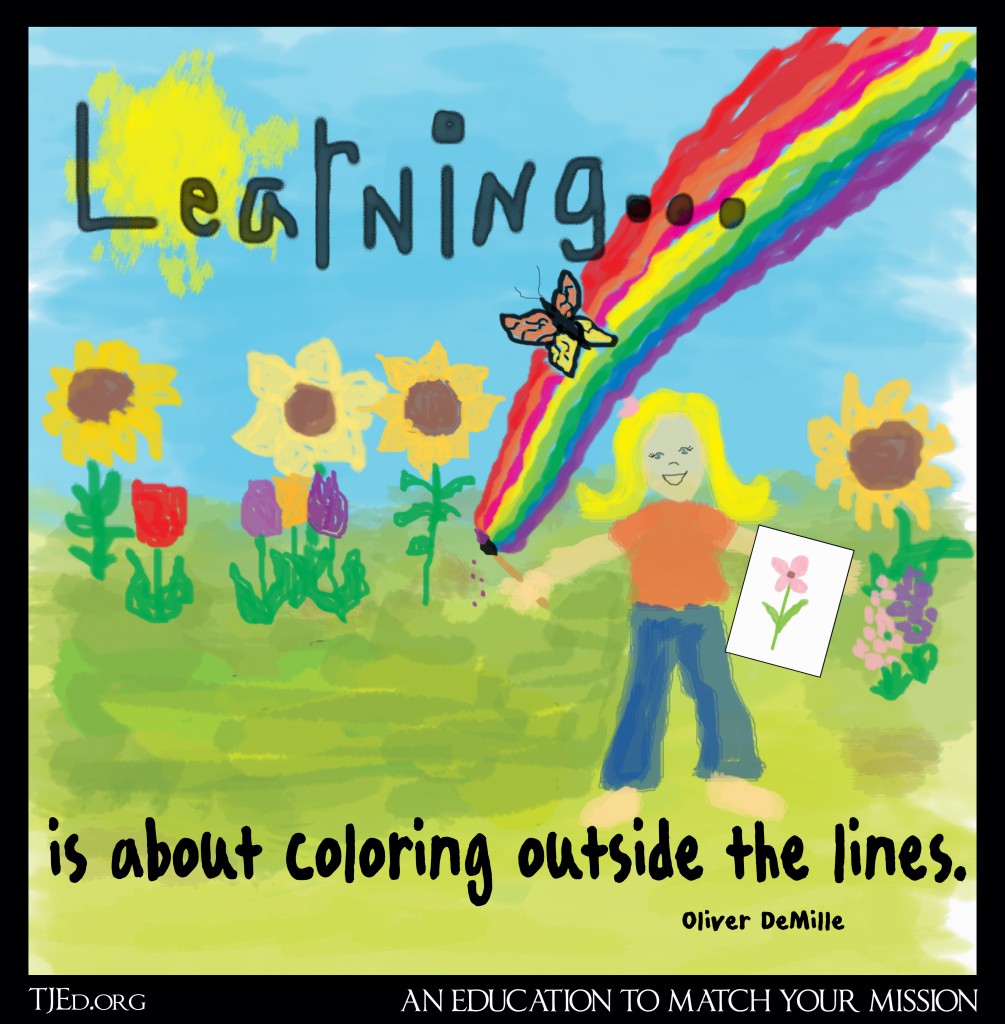
She looked at Abigail’s crayon drawing and praised it. And this was no ordinary praising. Vernie’s comments were specific and insightful, and went on and on and on.
Eight-year-old Abi beamed with happiness.
I sat and watched, a little amazed. How is it possible to find so many nice details to admire, I wondered. She’s really good at this!
Of course, Vernie is downright amazing. She’s been my sister-in-law for many years, but I’m continually impressed by her ability to one-up her last mentoring victory.
Watching a great mentor at work is a bit awesome, when you think about it.
When Abi left, Vernie turned to the rest of us in the room and said something fascinating: “That’s why we shouldn’t ever have children draw in coloring books!”
My mind raced. Now, that’s a definitive statement. Is she right?
“Why not?” I asked.
A Poor Substitute
“Because that teaches them to color somebody else’s drawing when they should be learning to draw on their own. It just shuts down creativity. It’s like telling them what to think. It’s not good teaching, and it’s a poor substitute for learning.”
I like to watch good mentors get passionate about the topic of teaching. They often come to the same conclusions, and it’s very instructive to notice the little differences and nuances of how they articulate things.
For example, I usually say, “Don’t teach them what to think, or when to think; teach them how to think.”
Vernie said it slightly differently: “It’s like telling them what to think. It’s not good teaching, and it’s a poor substitute for learning.”
I pondered how her version put the emphasis on learning. That’s a good change.
“Why are you so passionate about this?” I asked.
She looked at me like I might be crazy. Like the answer should be obvious to me—to everyone, in fact.
I laughed out loud when I looked around the room and realized that Rachel and my brother Will, Vernie’s husband, had the same expression on their faces.
“Seriously,” I said, “this seems really important to you. I know it’s important to me, but you’re responding to a child’s artwork, which isn’t my usual venue. For me, it’s usually a student’s comments or writings. I’m really intrigued. Please tell me more about teaching art.”
Starting Outside the Box
Vernie didn’t even pause. She just started talking: “The only thing that’s almost as bad as teaching kids to draw using coloring books is to teach them to color within the lines. That’s just wrong! Coloring outside the lines is so important.
“We spend years trying to make kids color someone else’s drawing, color inside the lines, write their letters in a straight line, and a bunch of other terrible mistakes, then when we hire employees we spend months or years trying to get them to think ‘outside of the box,’ use their creativity, take initiative, lead, use innovation and real thinking!
“Why don’t we just let them be creative from the start? Think of all the years of practicing their creativity and talents that we waste making them fit somebody’s ‘Official Education Plan.’”
I was feverishly taking notes.
“It’s like Mr. Pritchard from Dead Poet’s Society,” someone in the room said.
“When children learn to write their name,” Vernie continued, “if they are allowed to learn it naturally, they write it in any direction. They know how to write their name, but nobody has told them that it has to be on a horizontal line, from left to right, or in some languages right to left or up to down.
“They write it diagonally, upside down, upside down diagonal, half on one page and the other half in the dirt or even on a totally different paper…”
She smiled and looked around the room. She had us all leaning forward on the edge of our seats. All of us experienced mentors, all of us so excited by what she was saying.
If left to their own Creativity
“At some point, it’s okay to show them that one way to write their name is on a line from left to right, and that this is what people do most of the time. But it’s still their name if it’s done another way. And I think we shouldn’t even tell them that this is the most frequent way until they’ve been doing it however they want for a long while.”
My thoughts were racing as she spoke. This reminded me of John Holt’s writings. And Maria Montessori’s. And TJEd, for that matter.
I smiled at this last thought. Vernie kept talking and I kept taking notes. I’ll share them sometime. But this first idea really got me going. I just kept thinking about four pink petals and a long green stem with two carefully copied green leaves.
That’s the story that got me studying great education in the first place, and I shared it in my book A Thomas Jefferson Education. Like a true classic, it’s a story that teaches me more every time I read it—or even just think about it.
Today, listening to Vernie, and later to Will’s comments on the same topic, the pink petal/green stem story took on a whole new level of meaning. It’s not just about all the things a child can draw or paint if left to his own creativity. It’s even more than that.
It’s about how he or she learns.
Little Mentors
Put simply: Is the first lesson of education A) that good students follow and please an adult or expert, or B) that thinking and creating can bring you exciting knowledge and wonderful opportunities to serve?
Whichever one we chose, our child’s whole education flows from it. And let’s be clear: lessons A and B flow in totally opposite directions.
This evening I pulled Abi aside and asked her to show me her latest drawings and paintings, closely poring over them, one by one. I asked her lots of questions, the kind TJEd and Montessori (and Vernie) would approve of, open-ended questions that allowed Abigail to share her thoughts and feelings about her work.
As little Abi talked, excitedly, for well over an hour, I again sat in amazement and learned from her mentoring. I love learning. Learning is such an amazing thing, if we’ll let it happen.
Our children can teach us so much about learning. We just have to put aside things like schooling, curricula, education, and even teaching long enough to let learning lead out.
Learning is about coloring outside the lines.







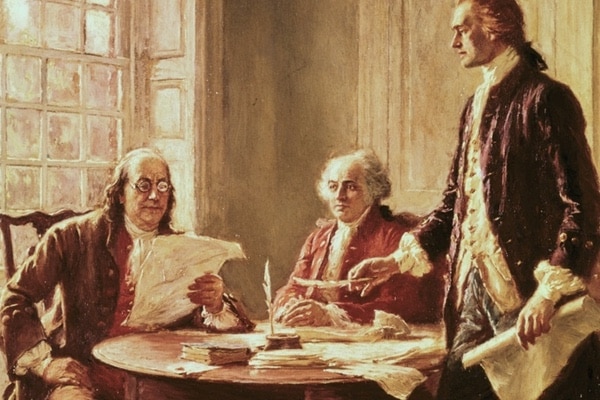

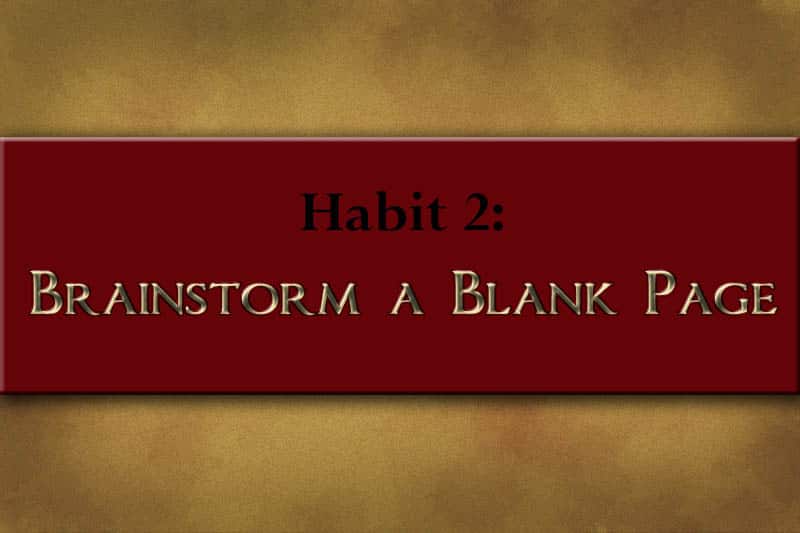







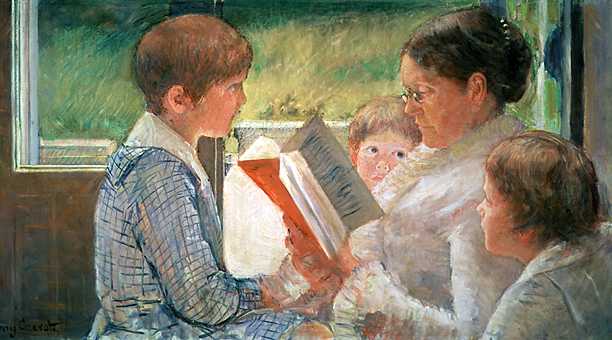




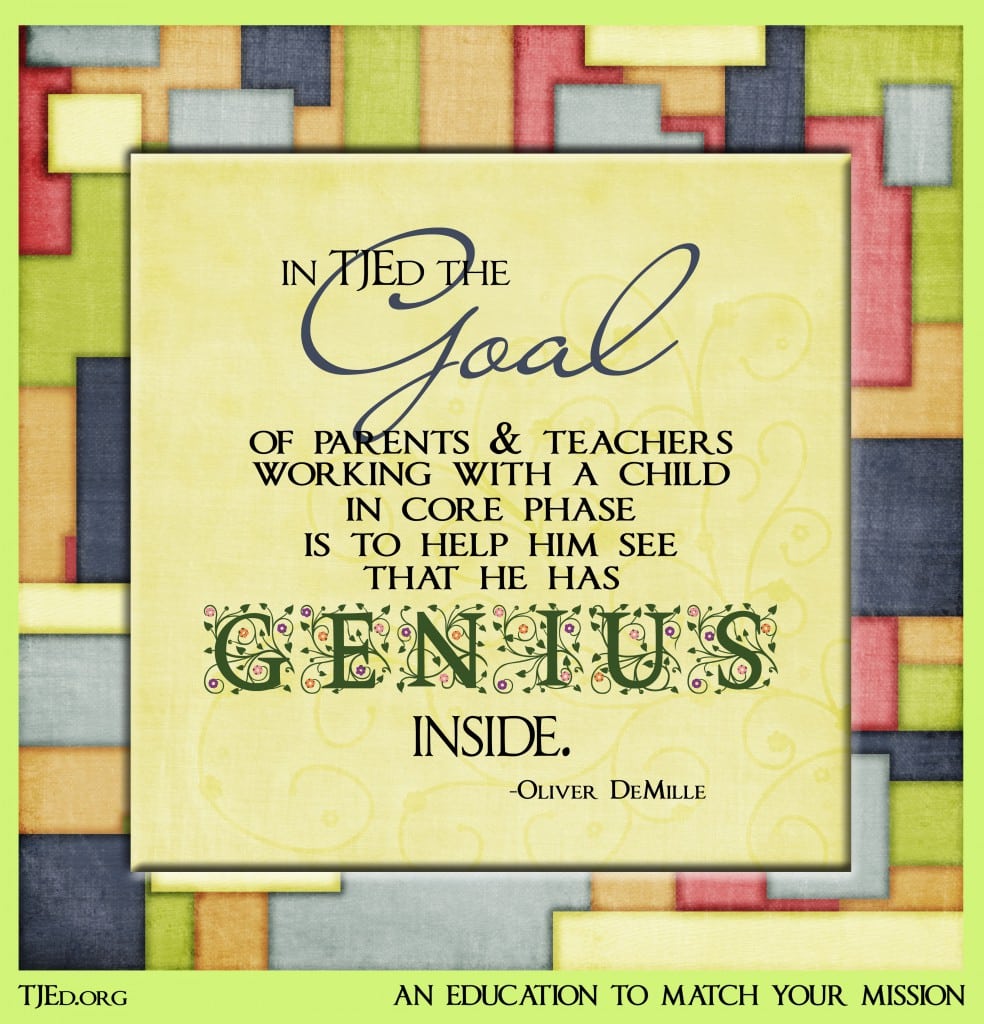







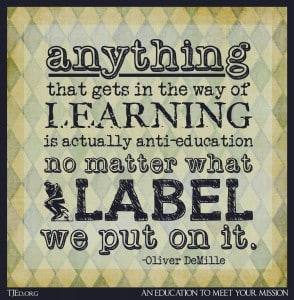
Such an excellent article. I would like to add that, when children become a certain age their brain changes and they want to draw realistically. Most of them give up. But there is an excellent classic book on drawing called “Drawing on the Right Side of the Brain,” by Betty Edwards. She has you do exercises that teach to to really see what you are looking at and be able to draw it. Anyone can do this. I hope I have the author right as I can’t find my copy. But she wrote a second book about thinking on the right side of the brain. Children are such great artists- I love their artwork and the point you make.
As I am reading this article, I am watching my three boys playing with their Legos and I am noticing the same similarities. After making the step by step creation that the Legos came packaged in one time, they use the Legos to make their own creations. I used to try to pull out the manuals when I played with them, but they always resisted and I would get frustrated when I couldn’t find a piece I needed. I have been humbled to realize yet again that our kids get it “right” so much faster than we do. Watching their imaginations expand and their skills progress as they make their own creations is awe inspiring at times, even if it isn’t picture perfect.
Like the comment above. And that was the whole point of the new Lego movie.
I loved this article. I always struggle when we move to get back into the hang of doing school again. We moved two months ago, and school just hasn’t happened much. But now I can see that it has been happening. My children and I have been adjusting to our new surroundings. They have a new yard to explore, new friends to meet, new places to go, new rules to follow (like learning how to ride a bike safely on busier roads), getting use to not having as much personal space. I could go on and on. We have all been learning so much. We haven’t been staying in the “Schooling” lines, but we have been growing and learning a lot! Thank you so much for this article. I am going to pray about throwing out all the coloring books and just getting the kids fun paper to use! Thanks again for all you do!
I love this article! My daughter loves art and I’ve been wondering lately how to better mentor her in art in TJED style. And here- my answer shows up! Thank you!
I did also want to make a comment on your quote, “Put simply: Is the first lesson of education A) that good students follow and please an adult or expert, or B) that thinking and creating can bring you exciting knowledge and wonderful opportunities to serve?
Whichever one we chose, our child’s whole education flows from it. And let’s be clear: lessons A and B flow in totally opposite directions.”
This reminds me of a Prima Ballerina autobiography (Beyond The Dance by Chan Hon Goh) I was reading this morning with my 7 yo daughter. The dancer grew up in China. I was amazing at how much she was ‘eager to please’ and how afraid she was to be different. It was SO much like you say- the river flowed in the exact opposite direction of freedom. Hum. Where is the conveyor belt leading to again? 😉 Very interesting connection!
Thank you for this thought-provoking article. Being a predominately right-brained household, it is a relief to know that we have unknowingly been doing something “right”. So many of our tendencies fail to mesh with traditional methods and ways of “correctness” throughout the years. One thing that has amazed me when observing my children’s art is the difference in perspective. My youngest daughter, now 7, has a perspective all her own. It thrills me to see what she will draw next and from what vantage point. Will it be the entire horse or only the tailend of it as it runs off of the page? Thank you again for this article.
As I read this article I kept thinking how important it is to teach children how to see. If we slow down and point out the colors, lines, shapes, contrasts of light and dark in their environment it teaches them to see the world from their point of view.
It’s about the internal dialog going on in their head and then that will transfer to the paper, or the canvas, or the clay or the digital film. No rights or wrongs because they own this work. It’s what they see and it’s what they experience. Who are we to tell them what they see? Teach them how to see and that leads to the creativity.
Leonardo da Vinci taught himself by observing all things living and writing in his notebooks – he never attending school and went on as a young adult to apprentice under a great artist. Look at the genius he became! We can expect no less of our own children.
I feel a little hesitant to be the voice of dissent on this topic. However, the most powerful learning experiences I have had in my life have been when I have voiced disagreement with the DeMilles. Their ability to stretch my thinking and understanding of truth never ceases to amaze me. I also mean no disrespect to Vernie. From the description of her mentoring ability and understanding of truth, I’m positive she didn’t mean to say anything contrary to what is right. So with that in mind, here I go:
Thinking of the idea: “we shouldn’t ever have children draw in coloring books,” as a universal principle is something I won’t accept easily. Don’t get me wrong. I whole heartily agree that it is important that a child’s education have a good foundation in creativity and “coloring outside the lines.” However I don’t think it is a true principle that to teach them to color within the lines is “just wrong.” It can be wrong in the wrong context, but so can coloring outside the lines.
Creativity is extremely important, but so is learning submission to rules and authority. Without rules and authority (the lines), civilization crumbles from lack of structure. Without the freedom to be creative (color outside the lines), civilization becomes stagnant, claustrophobic and either becomes shriveled and dies or becomes inflated and explodes, or some combination of the two.
I think this whole idea is the perfect example of the argument between the Dionysian and the Apollonian, the centrifugal and centripetal forces of human nature.
Truth, virtue, beauty, and everything good are found in the equilibrium between two opposing forces. A couple of examples:
1. A soap bubble has a certain beauty that is destroyed when the equilibrium between the surface tension and the interior air pressure is broken.
2. A kite can only fly with an equilibrium between the force of the wind and the restraining force of the string. If either one is taken out, the kite will fall.
It seems to me that the same is true about coloring within the lines and coloring without them. The best learning happens when there is an equilibrium between the two concepts, not in focusing on one without the other, or in having one dominant. There needs to be an equilibrium.
Ammon, you voiced Vernie’s opinion, as quoted by Oliver. Truth be told, we own coloring books, and our kids actually color in them. I don’t consider it a universal principle. But as always, Oliver really loves to illustrate an idea by drawing contrasts with common practices. And, truth be told, I don’t think the world would technically be worse off if kids didn’t have coloring books, but rather had plentiful quality materials and exposure to greatness. I’m not a fanatic on the subject, but I totally see Vernie’s point. And since she’s the artist (and not me) it could well be true that her opinion on the matter is worth a lot more than mine.
Learning is definitely about coloring outside the lines, but it is also about coloring inside them.
One of the problems that occurs with children’s symbolic drawing occurs when a teacher says to a child: “No a tree trunk is brown, not purple, or leaves are not red, but green.” Drawing is equally important to developing critical thinking and problem solving. Right brained children will keep on, but at age 10-12, other children will stop out of frustration. This video, which is quite long, will show you that learning to draw teaches all of the critical thinking skills that the DeMilles teach. I think Oliver’s remarks are a great metaphor for what they teach. I think that drawing could be added to this to develop critical thinking skills, and children and adults who learn to think outside the box. .http://www.youtube.com/watch?v=ctkRwRDdajo
While this you tube workshop shows how thinking and drawing are related, I think it best to start with her first book, which is a bit simpler. She left out one of my favorite exercises, of drawing things very quickly with a pen. She has written “Drawing on the Right Side of the Brain,” The New Drawing on the Right Side of the Brain,” “Drawing on the Artist within,” and a book called “Color.” Her techniques really work for those who would want to add this to teaching their children.. Art develops excellent out of the box thinking skills.
I think context is important here. Take away the application of art to civilization and look at art education alone. Coloring books are to art what a textbook is to education: someone else’s idea of what the world looks like. When you are training a child to be an artist you start first by removing the false lines. In college the art professors spent the first half of drawing 101 un-training their students in the art of coloring book knowledge. Have you ever looked at the images in a coloring book? Did they look real? Have you ever looked at the shape of an eye, a real eye, as compared to the coloring book version of an eye? Coloring books are an uncomplicated way to pass the time, but so is picking up a crayon and drawing on a plain piece of paper with the added benefit of not learning to draw according to an incorrect representation of truth. In teaching a child to color outside the lines you are teaching them to recognize truth and error, to know not just what they think they see, but what actually is. As a child learns to see accurately he will begin to see that lines are everywhere. Lines and their relationship to one another make up our world, and learning to recognize them clearly from those early stages of creative energy actually increases respect for those lines. Young children who are free to draw and create what they see seldom draw a view of the world that strays from the truth of the “lines” that hold them. The ground is on the bottom of their paper, the sky is at the top, and their perceptions of their surroundings are often more honest than what we would call a more “correct” drawing with vanishing points and depth. The important things are bigger, the less important things are smaller. Drawing outside the lines is not a negation of their importance, it is a matter of ownership. If a child is taught that they have the power to see the lines accurately, not just believe a narrow, limited representation of reality, and if they are given the freedom to draw and show how they see the world their respect for the lines will increase because it gives them the power of expression. Now lets go back and apply those principles to civilization. If a child is given the freedom to see his civilization as it is, not in the eyes of someone else’s agenda or politics, how will he paint it? If he is given ownership over the civilization of which he is a part and taught to recognize that he has the power to impact it, what genius will be unleashed to make the world a better place? True creative genius utilizes the lines to show reality in a new way, whether you work in oils, clay, sod, or the hearts and minds of men. Learning isn’t so much about where you color in relationship to the lines, it is all about becoming the master of the lines, whether through obeying them or knowing when to cast them aside to form a new creation.
Vernie, I appreciate your response. I totally respect the idea of owning the lines – both in art education and in the application to civilization. I suspect we are trying to say the same thing, and most of any disagreement we may have is probably mostly semantics.
But what Betty Edwards teaches you to do that helps the brain to better develop creatively, is to see the “negative” spaces in between the lines of an object, to see things differently as in metaphor, to perceive better, to see the “gestault,” or the essence of a whole, to see shapes as lights and shadows, and shades of color, an many other hidden things, rather than just the objects themselves.For example, in a face, your left brain will see nose, eye, lips, ear, cheeks, etc, but your right, creative brain will see the shapes of the light and shadow that create the shape of the face. Artists draw or paint these shapes and shadows, not the lines at all. You will then see patterns and relationships better, notice nuances and learn two ways of knowing.. Learning perspective improves intellectual perspective. A predominantly right brained child will keep on doing this as his brain will not make the switch to merely the left hemisphere’s analytic mode, , but most children will switch and creativity is inhibited. It is best to learn to use both hemispheres,and the more you develop both through a variety of activities, the better you will be able to think out of the box and be a creative individual. The brain is very neuroplastic and the greater variety of input it gets the better it works. Artists will tell you that they paint negative spaces and shapes more than lines. I am one and I know. I agree that coloring books are deceptive images and children should be encouraged to draw how they want to- which will be symbolic. A great example of right mode thinking occurs when we drive long distances and our right hemisphere takes over the many tasks required to drive carefully; it is at that time that many people have insights and eureka experiences. Going into the right mode can be learned and done at any age. If it is not natural to you then I suggest her books as a way to learn to do this. When I really want to “see” I go into my right mode.
I always excelled in school except when it came to coloring, handwriting, and motor skills. I received bad grades in those areas and was labeled as “messy”. I’m excited to give my kids the opportunity to color outside the lines when we homeschool them.
I’ve really enjoyed this article. I’m a recent full time to a family I was an occasional babysitter to (and former daycare teacher for the oldest child) and I’ve been looking for inspiration for teaching the oldest (4 years old). Since I don’t have to follow a strict curriculum now I want her to be able to be creative and learn without insisting on something be a certain way all the time so thank you!
I love the bold message of encouraging kids to color outside the lines, a great reminder that creativity isn’t about staying inside borders. Letting them explore freely can spark big thinking and imagination.